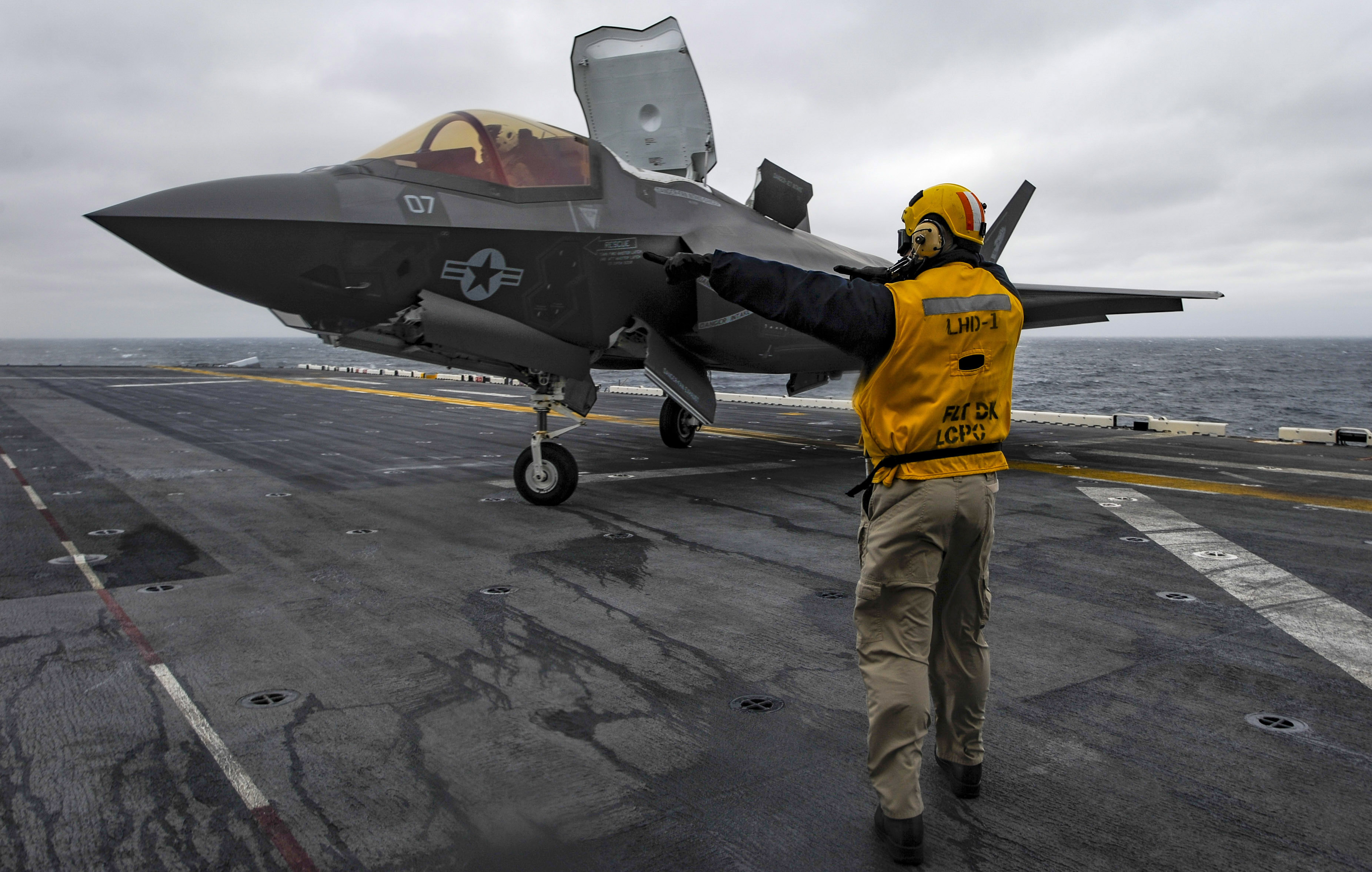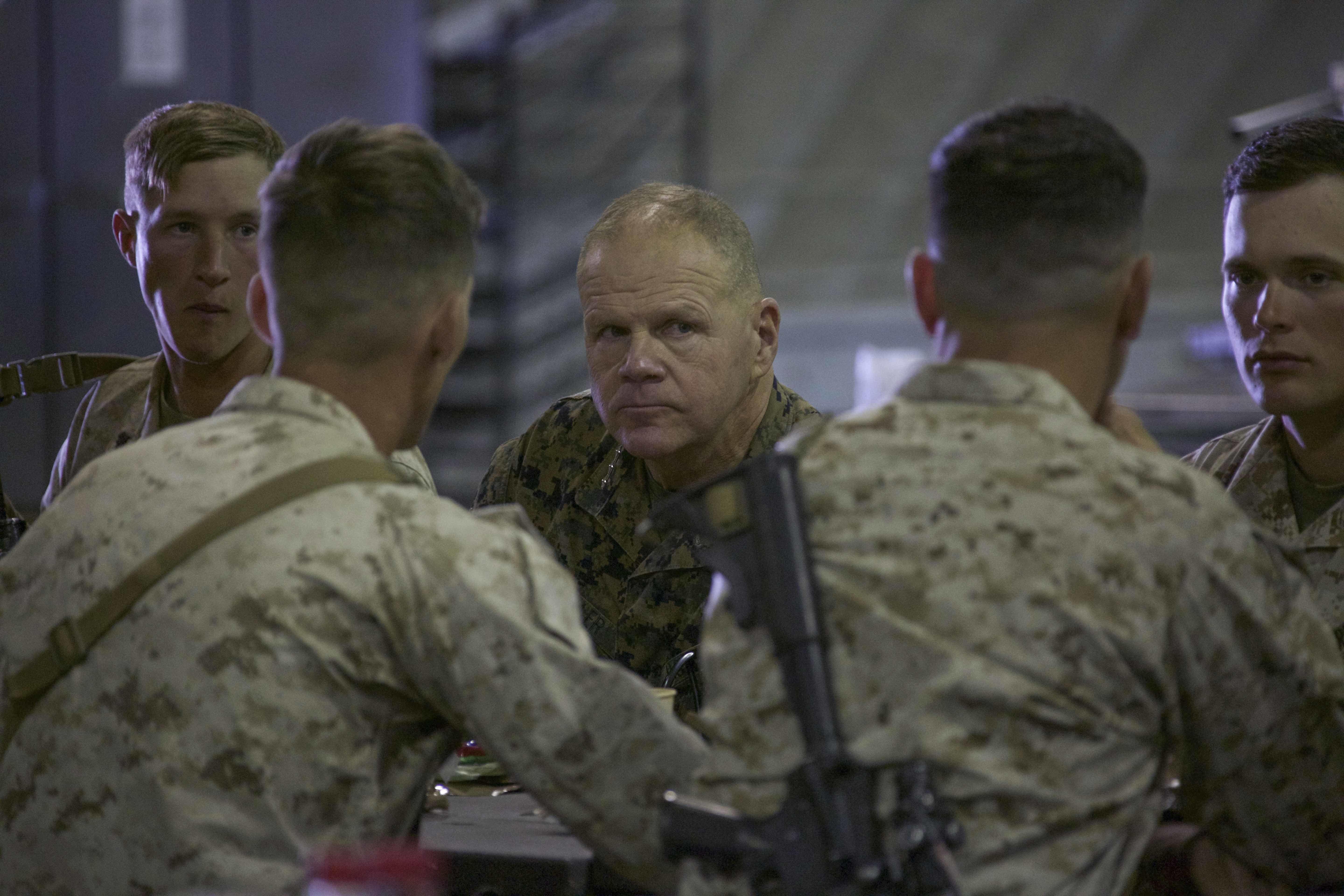
ARLINGTON, Va. – The head of the Marine Corps said introducing the F-35 Lightning II Joint Strike Fighter to American’s amphibious forces is key to the service’s future fights from the sea.
Commandant Gen. Robert Neller said the Marine F-35B variant will prove invaluable as the service shifts away from the ground-based conflicts in Iraq and land-locked Afghanistan back to its traditional role as a sea fighting force. The fighter’s extended range and data collection capabilities can provide targeting information from far beyond the current range of amphibious warships and give Marines better eyes on the battlefield.
“We have to be able to survive, as part of sea control, sea denial,” Neller said.
“We’re a part of the fleet, we’re always going to need protection, but it will be good if we can protect ourselves.”
Neller was speaking Thursday at the National Defense Industrial Association’s 2018 Expeditionary Warfare Division annual meeting. His comments capped a week of testimony Neller and members of Marine Corps leadership team made on Capitol Hill.
On Monday, the first F-35 fighters deployed aboard the amphibious assault ship USS Wasp (LHD-1). The patrol is the first step to a future of not just supporting Marines ashore, but also more fully integrating into operations at sea, Neller said.
Speaking of the current F-35 deployment on Wasp, and hinting at the aircraft’s potential, Neller said, “A lot of people are watching, a lot of people are paying attention to this.”
The reason Neller considers this deployment historic is because the F-35 has the potential to answer a key strategic and persistent question sea forces always face.
“What is the amphibious ready group going to do to see beyond the horizon?” Neller asked. “How are we going to see them and not let them see us?”

The full capabilities of the F-35 working with warships have not yet been developed. But when linked, the F-35 has the potential to send targeting data and other intelligence to ships far off in the distance. Neller suggested industry members in the NDIA audience could possibly provide solutions to improve aviation platform communications.
For example, in an internal research and development test Lockheed Martin used the sensors from an F-35 to prove the fighter could provide targeting information to a ship-launched Raytheon Standard Missile 6.
As for how the Marine Corps will use the F-35 now, Neller provided some hints during a Wednesday House of Representatives Appropriations subcommittee on defense hearing. He expects the upcoming fall deployment of F-35 aircraft from the West Coast will provide a good real-life test of the fighter’s capabilities.
“We’re looking now at a different posture of our force as we set the globe in a different way. And you’re going to have fifth-generation aircraft on an amphib deck, which we’ve never had before. So that’s going to cause our adversaries to have to look at it in a different way,” Neller said.
“It’s only going to be six airplanes; it’s not a carrier air wing. But it is a capability. And when you combine that with other surface action groups and other things, and even land-based aircraft, I think we’re going to put ourselves in a different posture and force our adversaries to look at us in a different way.”





